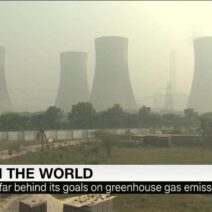As summer approaches, the sweltering heat drives many individuals indoors, seeking refuge from the relentless sun. In this pursuit for comfort, the choice of cooling mechanisms becomes vital. A pivotal question arises: Do fans truly combat humidity and provide relief from the oppressive heat? The answer is multifaceted, interweaving scientific principles with personal experience, and it warrants an in-depth exploration.
To navigate this discussion, it is imperative to understand the fundamental mechanics of fans. A fan’s primary function is to circulate air, creating a breeze that enhances the body’s natural cooling processes through evaporation. When the wind hits our skin, it accelerates perspiration evaporation, effectively dispelling body heat. In dry climates, where humidity is low, this cooling effect is pronounced and remarkably efficient.
However, as we pivot towards humid environments, the narrative shifts significantly. Humidity refers to the amount of moisture present in the air. High humidity levels can render the cooling effects of a fan less effective. When the air is saturated with moisture, perspiration does not evaporate as efficiently, hindering the body’s ability to cool itself. In such conditions, a fan merely pushes warm, humid air around, potentially leading to a sense of discomfort rather than relief.
It becomes essential to understand the role of the fan in various humidity contexts. In regions characterized by elevated humidity, such as tropical climates, conventional fans may struggle to provide the relief one expects. The effectiveness of air movement diminishes as humidity levels ascend, presenting a paradox for those seeking solace from the heat. Fans, while insightful in their design, do not alter the thermal properties of the air—they simply facilitate circulation.
In contrast, evaporative cooling systems, which utilize moisture evaporation to lower air temperature, provide an alternative remedy. These systems function by actively introducing water into the air stream, capitalizing on the evaporative cooling process. In arid environments, these units thrive, delivering substantial cooling effects and optimizing energy usage. However, in humid locales, the performance of these systems wanes, illustrating that context plays a crucial role in the efficacy of cooling methods.
Notably, the integration of humidistats in some fan models has started to emerge as an innovative solution to combat this dilemma. These sensors automatically adjust fan speed and operation based on humidity levels, delivering an adaptive response to environmental changes. By reducing airflow when humidity peaks, these fans can minimize discomfort while still functioning effectively in various conditions.
Moreover, one must also consider the psychological aspects associated with fans in humid conditions. The mere presence of a fan can instill a sense of refreshment, even if the physical cooling effect might be subdued. This phenomenon illustrates the intricate balance between perception and reality. While a fan may not drastically lower the ambient temperature, the subjective experience of air movement can create a psychological reprieve from the heat.
When evaluating the efficiency of fans versus more active cooling systems, the overarching concern often gravitates towards energy consumption. Fans typically consume less electricity compared to air conditioning units, making them a more sustainable choice for those aware of their environmental footprint. The ecological implications of choosing a fan over an air conditioner extend beyond energy savings; this choice aligns with broader sustainable living practices. In regions where electrical demand surges during heat waves, utilizing fans can alleviate stress on the energy grid, promoting a more balanced relationship with our environment.
Additionally, the maintenance and operational costs of cooling systems warrant consideration. Fans, with their straightforward design, require minimal upkeep compared to the complexities of air conditioning systems. This operational simplicity transforms fans into accessible allies in the battle against heat, particularly for those on a budget. The initial investment and long-term savings associated with fan utilization contribute to a resilient approach to home comfort, especially during the hot summer months.
Ultimately, the effectiveness of fans in combating humidity depends on various factors, including individual preferences and specific environmental conditions. For those residing in areas of high humidity, embracing additional measures—such as decreasing indoor moisture through ventilation or employing dehumidifiers—can enhance comfort levels irrespective of fan usage. In contrast, individuals in drier climates can harness the full potential of fans, reveling in their cooling prowess.
The discourse surrounding fans and humidity encapsulates a broader narrative concerning our interaction with the environment. It prompts one to consider the balance between comfort, efficiency, and sustainability. By thoroughly examining the multifold dynamics of how fans operate in relation to humidity, one gains a richer understanding of their utility in maintaining a comfortable living space. Exploration of innovative solutions, such as humidistats, marks a progressive step towards optimizing cooling methods for diverse climates.
In conclusion, the narrative of fans versus humidity is complex and nuanced. While fans undoubtedly provide a stimulating air circulation that can cool the body, their efficacy is inherently tied to humidity levels. Awareness of these dynamics empowers individuals to make informed decisions about their cooling strategies, fostering a more sustainable relationship with our environment. As we confront the scorching heat of summer, understanding this interplay can lead not only to personal enhancements in comfort but also to a collective movement towards environmentally conscious living.


